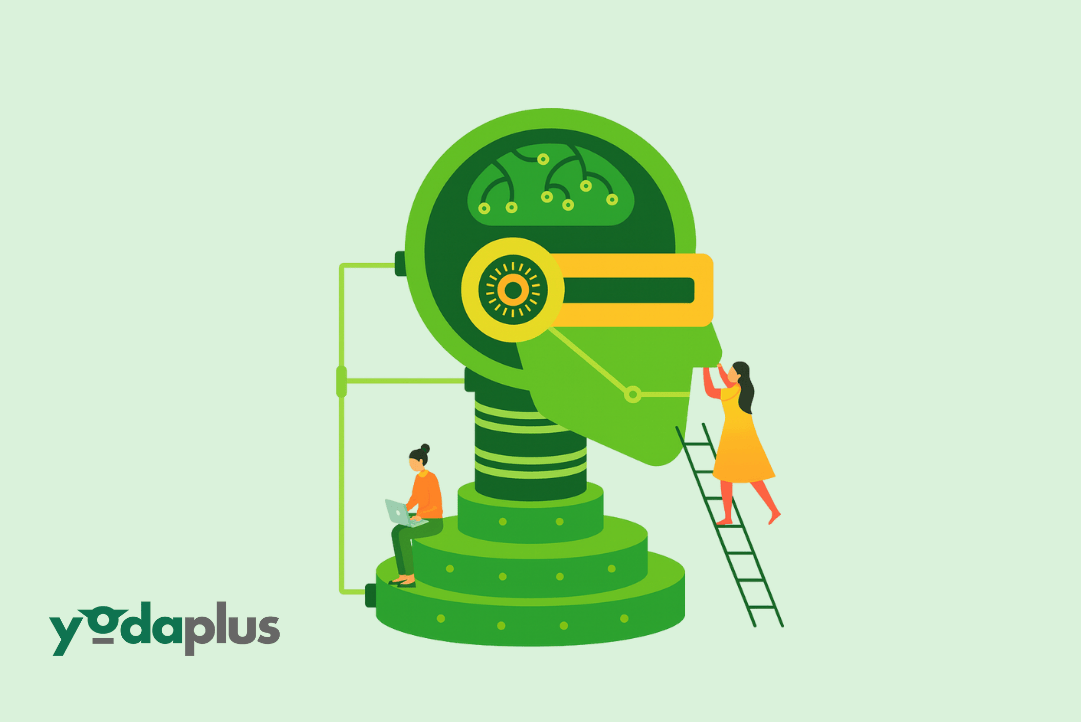
Reinforcement Learning in Agentic AI Simulators
October 24, 2025 By Yodaplus
Training Artificial Intelligence (AI) agents to think, adapt, and act independently requires more than large datasets. Real-world environments are unpredictable, and static training models can only take AI so far. To achieve human-like adaptability, AI systems need spaces where they can learn through experience. This is where reinforcement learning plays a central role within Agentic AI simulators.
Reinforcement learning allows AI agents to explore, make decisions, and improve their actions through continuous feedback. In simulated settings, this form of learning provides the foundation for autonomous systems and AI-powered automation that can function intelligently across logistics, business, and supply chain operations.
Understanding Reinforcement Learning in AI
Reinforcement learning (RL) is a branch of machine learning where an AI system learns by interacting with an environment. The agent performs actions, receives rewards or penalties, and adjusts its strategy to maximize success.
In simple terms, RL teaches an AI agent how to make decisions step-by-step, much like how a human learns by trial and error. Over time, these agents improve through feedback and repetition. This makes reinforcement learning essential for autonomous AI and intelligent agents that must operate in dynamic, uncertain conditions.
When used in Agentic AI frameworks, RL forms the reasoning layer that enables agents to adapt, cooperate, and optimize performance in both simulated and real-world workflows.
Why Reinforcement Learning Matters in Agentic Simulators
Agentic simulators are digital environments that mimic real-world conditions for AI model training. They serve as a testing ground where AI agents can learn safely without real-world risks. It strengthens these simulators in several key ways:
1. Continuous Learning and Adaptation
In RL-based simulations, agents do not rely solely on predefined datasets. Instead, they learn continuously by interacting with their environment. This helps autonomous agents handle complex scenarios that traditional AI technology may not anticipate.
2. Risk-Free Experimentation
Simulated environments let AI experiment safely. A workflow agent, for example, can test new decision patterns without affecting real-world systems. This is crucial in sectors like logistics, finance, and manufacturing, where small mistakes can have big consequences.
3. Goal-Oriented Behavior
Reinforcement learning allows AI to pursue specific goals defined by rewards. In AI-powered automation, for instance, the system might be trained to minimize fuel usage, reduce delay times, or improve route efficiency. The feedback loop ensures consistent improvement toward measurable outcomes.
4. Scalability Across Multi-Agent Systems
When integrated with multi-agent systems, RL supports cooperative learning. Multiple AI agents can train simultaneously, share outcomes, and coordinate tasks. This collective learning approach enhances scalability in complex networks such as global supply chains or industrial systems.
How Reinforcement Learning Works Inside Agentic AI
The process of reinforcement learning in Agentic AI simulators typically involves four main components:
-
Agent: The decision-maker that performs actions.
-
Environment: The virtual world where the agent operates.
-
Reward Signal: Feedback indicating success or failure.
-
Policy: The strategy that guides the agent’s decisions.
As the AI interacts with its simulated environment, it records patterns through data mining and neural networks, learning from every outcome. Over multiple iterations, the system refines its behavior, becoming more efficient and reliable.
This process is also supported by Generative AI (Gen AI), which helps create diverse and realistic training scenarios. Combined with AI-driven analytics, reinforcement learning ensures that Agentic AI systems evolve intelligently, not just algorithmically.
Real-World Applications
Reinforcement learning within Agentic AI simulators has several powerful use cases across industries:
1. Autonomous Systems in Logistics
In AI in logistics, reinforcement learning enables delivery bots or route planners to find optimal paths and adapt to disruptions like traffic or weather.
2. AI in Business Workflows
For Artificial Intelligence in business, reinforcement learning helps automate repetitive decisions such as inventory control, scheduling, and predictive maintenance.
3. Generative AI-Enhanced Training
By pairing Generative AI tools with reinforcement learning, simulators can introduce unexpected scenarios, making agents more resilient and versatile in AI applications like forecasting and risk assessment.
4. Multi-Agent Collaboration
Through Agentic AI platforms, reinforcement learning facilitates collaboration between agents. For example, Crew AI systems can divide large tasks into smaller parts, coordinating actions for faster, collective results.
The Future
The combination of reinforcement learning and Agentic AI is paving the way for the next phase of AI innovation. As simulations become more advanced and connected, autonomous AI systems will increasingly be able to train themselves using virtual environments that mirror real-world complexity.
This evolution also ties into Responsible AI practices, where controlled simulations reduce ethical risks while improving model transparency and reliability. With self-supervised learning and AI frameworks such as MCP, the line between virtual and real-world learning will continue to blur — creating more intelligent, context-aware, and adaptable AI agents.
Conclusion
Reinforcement learning is the driving force behind how Agentic AI learns to act independently and intelligently. By merging simulated environments with continuous feedback, AI systems gain the ability to reason, experiment, and improve safely.
At Yodaplus, our Artificial Intelligence solutions combine reinforcement learning, Agentic AI, and Generative AI to create adaptive, future-ready systems that help businesses, logistics, and autonomous networks operate with confidence and precision.